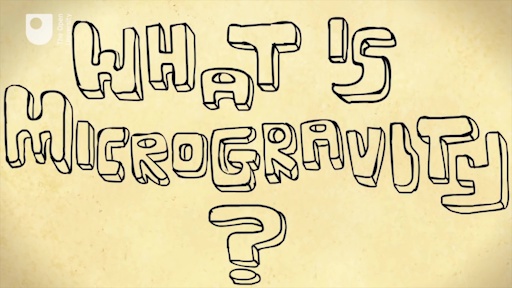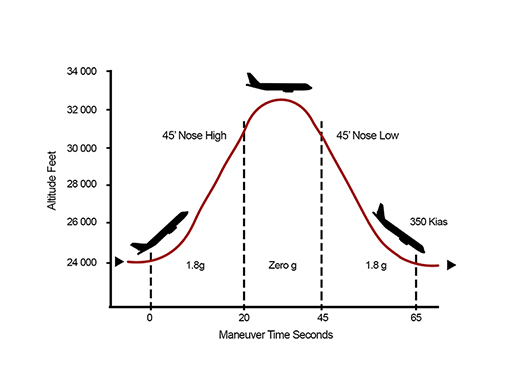1 Microgravity and the ‘vomit comet’
There are several ways of describing the apparent absence of gravity. You may have heard of ‘weightlessness’ where there seems to be no weight, or a ‘zero g’ environment where gravity (g) doesn’t seem to be acting. What about ‘microgravity’ though? Do these terms mean the same thing?
Watch Video 1 which introduces ‘microgravity’ environments. Then complete Activity 1.

Transcript: Video 1 What is microgravity?
Activity 1 What is microgravity?
Complete the following statements, based on what you learned in Video 1.
Now watch Video 2, which discusses parabolic flights and how they can create a microgravity environment. This video also discusses how it is thought planets are formed. Then complete Activity 2.

Transcript: Video 2 The ‘vomit comet’
Activity 2 Microgravity environments
Study Figure 1, which shows the parabolic flight pattern in more detail. Then select the answer to the questions below, based on this figure and Video 2.
a.
32 000 feet
b.
24 000 feet
c.
34 000 feet
d.
28 000 feet
e.
26 000 feet
The correct answer is a.
a.
22 seconds
b.
0 seconds
c.
45 seconds
d.
10 seconds
e.
65 seconds
The correct answer is a.
a.
In the top portion of the curve
b.
On the way up.
c.
On the way down.
d.
On the bottom portion of the curve.
e.
Nowhere.
The correct answer is a.
a.
Tiny ice and dust particles collide gently and stick together in space.
b.
Large ice and dust particles collide hard and bounce off each other in space.
c.
Tiny ice and dust particles collide hard and stick together in space.
d.
Large ice and dust particles collide gently and stick together in space.
e.
Tiny ice and dust particles collide gently and bounce off each other in space.
The correct answer is a.
Moving on from parabolic motion and planetary formation, next you will consider the physics behind the orbit of the International Space Station (ISS).

